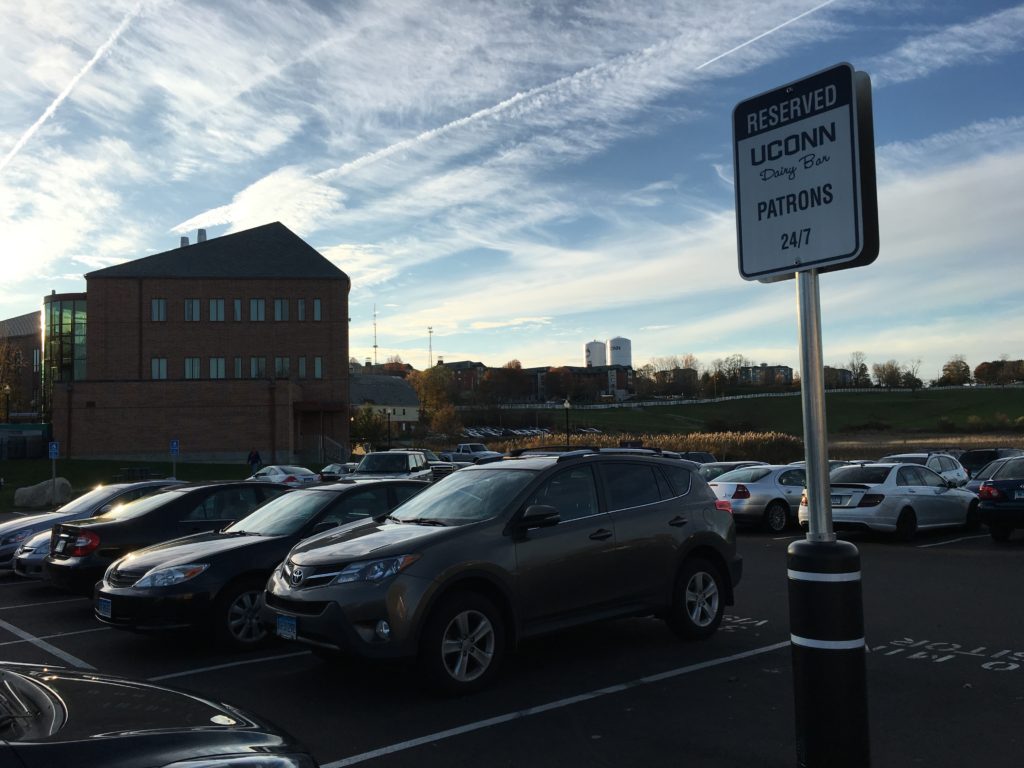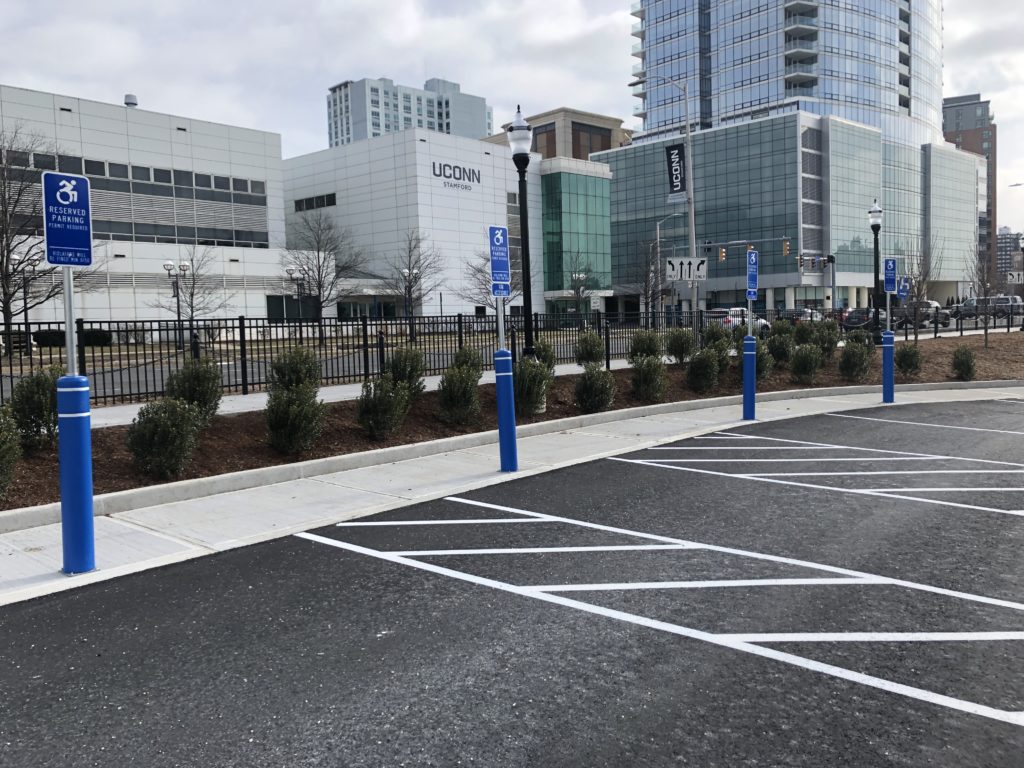ADA Parking
With over 25 million faculty, staff, and students coming and going across college and university campuses in the United States, it is crucial for these organizations to have proper parking signage displayed.
In recent years, the University of Connecticut (UConn) has battled with damaged and broken sign posts across their campuses. The bent sign posts were at risk of being out of compliance with the American with Disabilities Act (ADA). The broken signage and bollards also diminished the aesthetics and style of the campus
Per ADA guidelines, parking lot ADA signage “shall be 60 inches minimum above the finish floor or ground surface measured to the bottom of the sign”. The signs must be marked to appropriately identify accessible space and deter others from parking in them. Universities often find that many of the existing sign posts do not reach the 60” minimum due to their existing damage.
Studies show that violations and complaints towards facilities with improper ADA regulations have increased year over year. Violations can turn into litigation and settlement costs incurred by the facility owner or property manager, increasing parking lot related expenses. Keeping non-compliant ADA signage on one’s property is risky and unlawful.
Replacing and Repairing
Standard protocol for replacing out of compliant or damaged posts includes individually removing and repairing each sign post as they became out of ADA compliance. However, this procedure is extremely costly in both material and labor costs.
U-channel and square channel sign posts can take nearly three hours to repair and replace. A skid steer and pneumatic jackhammer are needed to take out the surface and the post. Reinstalling the post involves numerous steps, including placing the post into the hole and leveling the post and surface, refilling the hole with a dirt gravel mixture, laying and flattening an asphalt patch, and finally, unbolting and bolting a sign from the old post to the new post. This process can leave a work crew at the job site for hours.
Sign posts attached on top of concrete bollards are littered across university campuses nationwide in an effort to add more “protection” to the post. However, like u-channel sign posts, they are susceptible to getting damaged often. The rigid installation of a concrete bollard only makes the repair and replacement more difficult. Concrete bollards are a reliable way to protect a property’s assets, but their use in parking lots is illogical due to the constant flow of vehicle traffic.
Industry experts estimate that replacing a concrete bollard can take over double the amount of time that it takes to replace a u-channel post. Concrete bollards take almost six and a half hours of labor to replace and cost hundreds, if not thousands of dollars, in labor and material cost. Concrete bollard removal and replacement requires bulky and special equipment and machinery such as a skid steer, cherry picker, and core drill. This process is timely, expensive, and holds the surrounding parking lot spaces hostage as the work crew must clear out the job site and break up the surface to remove and replace the bollard. A simple solution to eliminating constant parking lot repair and maintenance would be to find a parking lot solution that is built to last and fast to install.
The FlexPost® Solution
UConn is now using FlexPost® products for new parking lot signage and sign post installs. They have also chosen to retrofit old damaged posts and bollards with FlexPost® products. Concrete base bollards were repeatedly being hit and run over due to poor visibility. The concrete bollard is now replaced with a FlexBollard-XL™. Usually, signs posts installed on campus are aluminum poles. However, these poles are damaged easily by snow equipment and vehicle impacts. To remedy the issue of broken and damaged posts, UConn has opted to retrofit these locations with FlexPost-XLs™.
The university has been pleased with the durability, aesthetics, and ease of install with FlexPost® products. Mark Phegley, from the school’s Facilities Operations department, states that FlexPost®’s products gave him “peace of mind” knowing that the flexible sign posts will be there for a long time. He notes how a FlexPost-XL™ still stands even after a dump truck “ran right through it [and]…the post and hardware stayed in the ground and upright”.
All FlexPost® products are flexible, surface mounted, and can be installed within 30 minutes. Installation no longer requires hours of labor, special tools, or bulky equipment. With the FlexPost® family of products, any organization can save thousands of dollars annually in parking lot repair and maintenance costs. FlexPost® products meet the height regulations for ADA accessible parking spaces and are built to take impacts from vehicles for years to come. The flexible bollards are highly visible due to the brightly colored high-density polyethylene while appearing rigid to deter drivers from hitting them. However, if a driver does hit them, the bollard flexes upon impact and no damage is done to the bollard, parking lot surface, or vehicle.
Mr. Phegley notes how versatile the flexible sign posts and bollards are when it comes to addressing the multitude of parking and transportation issues the university must deal with. Regardless of whether a post in a parking lot is comprised of a concrete bollard or a u-channel sign post, the probability of it getting struck by a vehicle at some point is very high. FlexPost® products ensure that the signage on the property remains visible and durable.



